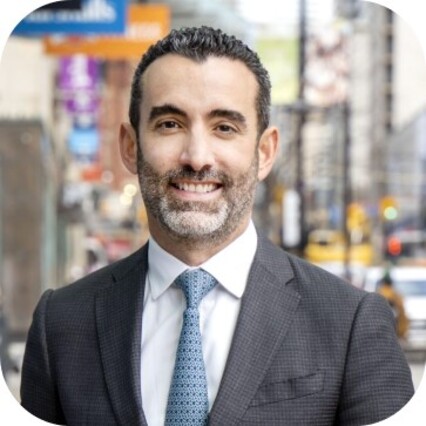Boyden’s Alain Pescador engages in a discussion on this timely issue with Isaac Garcia-Sitton and Muraly Srinarayanathas
In a pivotal move, Canada has recently implemented a decision to cap international student permits, sparking a wave of discussions and concerns about the implications on various fronts. To delve into the multifaceted impact of this policy change, we reached out to experts and key stakeholders in the field, seeking their insights on how Canada stands to gain and lose. As one of the world's leading destinations for international students, Canada's decision is poised to reshape the education landscape and influence the choices of prospective students globally. Beyond the immediate effects on education, our discussion also delves into the nuanced impact on Canada's talent and labour market.
In this Q&A, Boyden’s Alain Pescador engages in a discussion on this timely issue with Isaac Garcia-Sitton, Executive Director of International Student Enrolment, Education & Inclusion at Toronto Metropolitan University, and Board Director at the Canadian Bureau for International Education, along with Muraly Srinarayanathas, Executive Chairman of 369 Global and CEO of Computek College. Together they unpack the rationale behind capping international student permits and its potential effects on the economy, cultural diversity, and Canada's global reputation. The conversation reveals intricate aspects of this policy shift and its far-reaching consequences, drawing on the perspectives of those who navigate the intersections of education, business, and international affairs.

Alain Pescador, Principal – Boyden Canada

Isaac Garcia-Sitton, Executive Director of International Student Enrolment, Education, & Inclusion - Toronto Metropolitan University; and Board Director - Canadian Bureau for International Education

Muraly Srinarayanathas, Executive Chairman - 369 Global; and CEO - Computek College
AP: What is your immediate reaction to Canada's decision to cap international student permits, and how do you perceive the gains and losses for the country with the introduction of this policy?
MS: I find the decision made by our government regrettable. It attributes blame to international students rather than addressing our country's core underlying and intricate socio-economic challenges. I am concerned about its potentially severe long-term impacts on our economy. Welcoming smart, young, talented, and ambitious individuals who contribute to our society is crucial. Nevertheless, ensuring we welcome individuals who can address critical labour shortages in specific sectors is equally important. Balancing these considerations is key to making informed and effective decisions that will benefit Canada in the long run.
IGS: Like most in the sector, including post-secondary institutions, both levels of government, staff, and students, I was shocked by the announcement. Of course, there had been discussions around introducing caps, but I don’t think many expected the government's stance to be this extreme. In response to the announcement, several key stakeholders have criticized the federal decision as a "blunt instrument" and have urged them to reconsider.
The decision to link permit caps to provincial populations, aiming for a more balanced distribution of international students across the country, will inevitably benefit certain provinces and their institutions where the expected cap exceeds the current number of study permits issued. Examples of these "winners" include Newfoundland, Saskatchewan, and Alberta. Conversely, the province of Ontario, which hosts over 50% of all international students in Canada, stands to “lose” the most in this approach.
These policy changes introduce a new set of complexities for provincial authorities and institutions to navigate, triggering additional announcements (like Ontario and British Columbia), further negatively impacting institutions and prospective students. Additionally, while most measures enacted by both levels of government are necessary, their implementation could be considered a loss for the sector. This past week has been exhausting — not unlike the pandemic when institutions, national associations and prospective students were on edge, awaiting new updates.
AP: As one of the world's most sought-after destinations for international students, how do you foresee this policy impacting the education landscape in Canada?
IGS: I anticipate a significant recalibration within the international education sector leading to decreased student mobility to Canada during this cycle. Given the current timelines, with provinces required to develop the new mandatory attestation process by March 31st, there's a considerable impact on the recruitment cycle for the upcoming academic year. This timing is particularly challenging, as we're already in early March, and the window for students in key markets to apply for study permits and arrive in Canada in time for the fall term is rapidly closing.
This is even more critical for institutions with spring intakes, where the shortened timeline could lead to significant disruptions. This policy change might inadvertently impact Canada's attractiveness as a destination for international students in the short term. The post-secondary education sector, along with both levels of government, will need to navigate these changes carefully to maintain Canada's reputation as a premier destination for international education in the future.
MS: The challenge lies in insufficient government investment in education. In Ontario, the freeze on domestic tuition has exacerbated the pressure on institutions dealing with rising costs from inflation. While some public institutions have experienced quadrupled revenue growth due to increased international students, some esteemed institutions like Queen's University now risk deficits. Our reliance on international students, constituting approximately 30 per cent of the student body and contributing about 68 per cent of revenue at most schools, is concerning. On average, international students pay up to five times more tuition than domestic students. This heavy reliance is not sustainable, particularly with the government capping the number of international students entering the country.
While Canada will remain a top destination for prospective international students, the government must actively ensure proper funding and regulations for our postsecondary institutions. Insufficient funding and regulations could compromise the quality of education, leading to reputational damage for Canada. It is crucial to avoid blaming international students and private colleges. Instead we must collaborate with institutions to establish effective regulation and funding mechanisms that uphold the reputation and strength of our post-secondary education system.
AP: In light of the capped permits, what are the implications for the upcoming international education strategy, and do you believe prospective international students will reconsider Canada as their study destination?
IGS: Immigration policy and international education in Canada are closely tied, so it would be critical for Global Affairs Canada (GAC) to account for these new policy measures when working on the renewed international education strategy set to expire on March 31st this year. Key considerations might include ensuring the integrity of the international student recruitment process, providing better immigration support, achieving a more balanced distribution of international students across provinces and cities, and reinvesting international tuition revenues to enhance support services at post-secondary institutions. Equally important is establishing a consensus on the primary objectives, principles, and values that Canada aims to uphold in this context, as well as our responsibilities to the students who opt to pursue their education and potentially build their futures here. I've delved into these topics, including an examination of Canada's International Education Strategy and the recent shifts in immigration policy, and their broader implications for the sector in a recently published op-ed.
Canada's standing as a top choice for international students hinges significantly on how we, as a country and sector, respond to these changes. Ultimately, in principle, the intent of the cap is to better support international students and maintain a more sustainable growth trajectory. However, in a fiercely competitive global market, students have the option to pursue their studies in other destination countries, like the UK, Australia or the US.
MS: This policy change may potentially discourage prospective international students from choosing Canada as their study destination. Along with the imposed work hour limits and stringent financial requirements, the pool of eligible students will likely be predominantly composed of financially affluent individuals. This raises the question of whether they would be inclined to remain in Canada after graduation, contributing to our economy, or choose to return to their home countries or explore opportunities elsewhere.
There are also structural challenges within Canadian companies that create obstacles for newcomers regarding employment opportunities and the equitable reception of opportunities and values afforded to Canadians.
There is also a concern that the ongoing discourse may lead to anti-immigration sentiment, causing international students to reassess Canada as a destination. It is important for the government to consider how this will potentially impact Canada's future ambitions and aspirations. Our nation needs to attract a substantial amount of talent by 2100 to contribute to the building and sustainability of our country. Thus, fostering an environment that remains welcoming and inclusive to support these objectives is crucial.
AP: How do you anticipate this policy will shape the landscape for skilled talent in Canada?
IGS: To an extent, reduced volume of international students may negatively impact availability of skilled talent. However, it also depends on our ability to retain the international student base we currently have and the support that can be provided to new and existing students to transition to the labour market. There are bigger problems at play here — international students are usually offered low-skilled forms of employment and typically earn less than their domestic counterparts despite having the same credentials. With fewer students coming in, our focus should be on aligning our programs with industry needs, offering better career advising and placement services, and a commitment to fair hiring practices from employers to mitigate biases in recruitment.
MS: You can view the labour market information available on provincial websites to discern the considerable number of job vacancies across various sectors nationwide. It becomes evident that not all these positions, particularly in service sectors, can be filled solely by Canadians. As a nation founded on immigration, our future prosperity hinges on our ability to attract great human capital.
Numerous instances highlight the imperative for innovation and for global talent to contribute to our economy. Unfortunately, Canada has been experiencing a prolonged period of lag in this regard. It is essential to foster cross-border collaboration to ensure the optimal alignment of skilled individuals with suitable roles supported by the necessary systems. The current policy represents a regression and contradicts the strategic direction our country requires at this juncture.
AP: What measures can be taken to ensure that the imposed caps, and revisions in the Post-Graduation Work Permit (PGWP) program, do not negatively impact Canada’s ability to fill labour market gaps?
MS: The PGWP remains crucial in attracting students and labour to Canada. However, concerns have been raised regarding its application, revealing a certain degree of inequity. In the aftermath of these issues, it is recommended that thoughtful consideration be given to extending the PGWP, particularly for reputable career colleges that consistently demonstrate their commitment to quality education. A recalibration and fair distribution of the PGWP could contribute to a more equitable and effective implementation.
IGS: As I mentioned before, to counter the impact of reduced volume of incoming international students we can emphasize retention and support strategies so qualified international students can successfully transition to the labour market and grow professionally in their field of work. Equally important is the need to ensure that employers understand the benefits of, and processes for, hiring international students. Overall, developing an international education system that is more responsive to labour market needs, not only requires strategic enrolment management but also more structured and proactive engagement between different stakeholders to address the current and future demands of the job market.
AP: International students are integral to fostering cultural diversity on campuses and within Canadian communities. How might these caps affect the richness of cultural exchange in educational institutions and the diverse composition of communities across Canada?
MS: Fortunately, Canada is a multicultural society, and I believe the cultural repercussions of this decision may be less severe, particularly for institutions in our major cities. However, the potential consequences could be significant for institutions in more rural regions that heavily rely on international students. Many of these rural areas are already grappling with labour shortages, and international students have played a crucial role in contributing to the economy of these regions and fostering cultural diversity. The loss of cultural and economic contributions from international students will be felt. To address these challenges, the government may need to offer incentives to encourage more immigrants and Canadians to work in these regions, bridging labour and potential cultural gaps.
IGS: The impact would vary from one institution to another and across provinces, depending on what percentage of their population is represented by undergraduate international students. One of the aims of this policy shift is to have a more balanced distribution of incoming students across Canada, which might help some institutions to become more diverse. A noteworthy aspect of the announcement is IRCC’s plan to implement targeted pilots in 2024 to attract underrepresented cohorts of international students, which can be expected to foster cultural diversity on campuses.
AP: On the global stage, how do you foresee this decision will be perceived, particularly within the context of Canada's reputation as an inclusive and welcoming country?
IGS: Despite its stated aim of protecting the integrity of the international student system, the decision is being perceived as extreme and has also, unfortunately, led some to conclude that international students are to be blamed for the ongoing housing crisis. I think, more than the decision itself, it is the government’s approach to instituting this significant and abrupt policy change without proper planning that is problematic and damaging to the reputation of Canada as a welcoming destination for international education. Requiring provincial governments to act upon the new policy immediately has created an environment of chaos and uncertainty in the sector and has caused a lot of anxiety amongst international students. This could have been avoided by adopting a more consultative approach and using targeted and incremental policy changes.
MS: This decision can raise doubts among many potential immigrants and international students about whether Canada remains an attractive destination for them. However, I do believe that the average Canadian, for the most part, does not hold an anti-immigration stance. I think the majority of Canadians embrace immigration and recognize its benefits. The challenge lies in the government's failure to address and reform the structural issues necessary to accommodate the increasing levels of immigration and international students, resulting in unintended consequences. Resolving these issues is essential for maintaining Canada's reputation as an inclusive and welcoming destination.
_______________________________________________________________________________________________________
Boyden’s Alain Pescador conducted this Q&A with Isaac Garcia-Sitton and Muraly Srinarayanathas by email. _______________________________________________________________________________________________________
About Isaac Garcia-Sitton
Isaac is a respected leader in the Higher Education (HE) sector with over 20 years of experience in international relations and business development. An accomplished former diplomat and senior HE administrator, he currently serves as the inaugural Executive Director, International Student Enrolment, Education & Inclusion at Toronto Metropolitan University, and is a member of the Canadian Bureau for International Education Board of Directors. As a scholar-practitioner in the field of international education, he is a prominent thought-leader and advocate for policy measures to enhance international student support in Canada. For his efforts to support immigrant communities, he has been recognized as one of the 10 Most Influential Hispanic Canadians in 2018 and received the Top 25 Canadian Immigrant Award in 2020.
About Muraly Srinarayanathas
Third Culture Kid, Canadian Business Leader, Investor and Philanthropist all describe Muraly Srinarayanathas, Co-Founder and Executive Chairman, 369 Global. 369 Global is a rapidly growing conglomerate that includes regulated career college, Computek College delivering quality services to Canadian newcomers and immigrants. Specializing in skills training and workforce development, international recruitment, and global market access programs, 369 Global aims to effect positive change worldwide by offering inclusive, equitable and prosperous solutions.
After 25 years building and scaling businesses around the world, Muraly now leads powerful initiatives to create a sustainable and equitable future. His perspective that diversity is our greatest strength, is often featured in the media.




